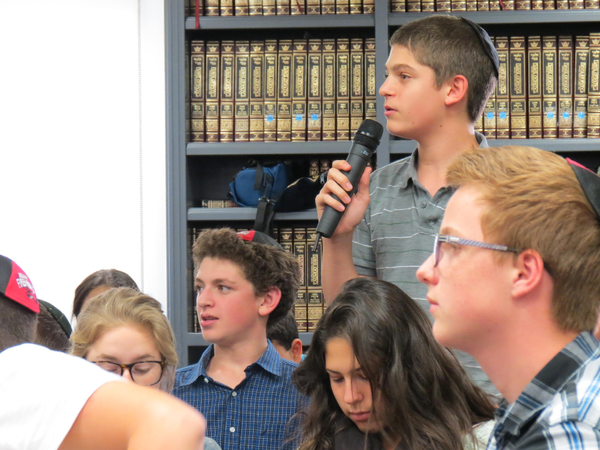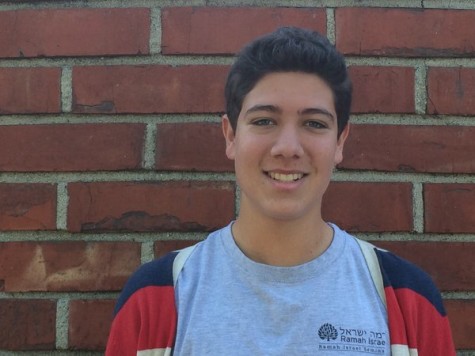Rabbi Segal to announce decision on girls wearing tefillin tonight

CONTROVERSY: Freshman Zev Kent expresses opinion at Town Hall Oct. 31.
November 14, 2013
Three weeks after his initial email raising the question to the Shalhevet community, Rabbi Segal announced last night that he would not let female students wrap tefillin and wear tallit at Shacharit.
“Ultimately, I have made the difficult decision not to allow this young woman to wear her tefillin at a Shalhevet tefilla group,” Rabbi Segal said in a lengthy e-mail, saying he felt torn between the two options.
Rabbi Segal admitted that halacha (Jewish law) actually allowed it. But he said the school needed to satisfy a wide range of beliefs to maintain the community that it has.
“Shalhevet is a school that draws from a broad spectrum,” Rabbi Segal wrote. “In order to maintain that diversity, there will be times when something might be technically permitted but not wise to allow.”
In his e-mail, which was sent out at 8:40 pm on Thursday evening, Rabbi Segal said he was glad Shalhevet had debated the issue, though he noted that others criticized that, too. The topic was aired not only through community e-mail, but in Town Hall and other discussions among students, faculty and parents.
One person who spoke at Town Hall last month was junior Sigal Spitzer.
“I think Rabbi Segal made the right decision for the school and community at this time,” said Sigal in an interview Friday. “Sadly this is the case, but the Los Angeles community is not open to having a Modern Orthodox school even consider the fact that woman would wear tefillin and nevertheless, put that into policy.”
Rabbi Segal also included excerpts in his e-mail from replies he had received in response to his original question, which was posed in a weekly “From the Virtual Desk of Rabbi Ari Segal” message Oct. 15.
One person wrote, “I think the question is ‘what do you want Shalhevet to be?’ Do you want it to be a viable option for the Orthodox community in Los Angeles, or are you trying to change the way the community views Orthodox Judaism? Unfortunately I don’t think you can do both.”
That comment closely mirrored Rabbi Segal’s original observation that the question created a “no-win situation” for the school.
“I believe that raising this topic in the weekly email… not only was acceptable but of paramount importance,” Rabbi Segal wrote.
“I believe strongly that we can, and will, build a serious yet diverse and tolerant Modern Orthodox school while teaching the community that we should be able to debate issues,” he wrote, “even when those issues make us uncomfortable.”
He added that there were “people I care about and respect deeply” who thought he should not have raised the issue publicly, because even discussing it would discourage students from applying to Shalhevet. Sigal Spitzer strongly defended the public discussion.
“While Rabbi Segal did have to make his judgment based off of public opinion and communal values, I respect the way he went about the process and strived to receive feedback and criticism from leaders not only in Los Angeles but other Modern Orthodox areas around the country,” Sigal said.
“I trust Rabbi Segal’s halachic view as a rabbi and we must realize that he is not only representing his own Jewish opinion but is also representing a larger institution.”













